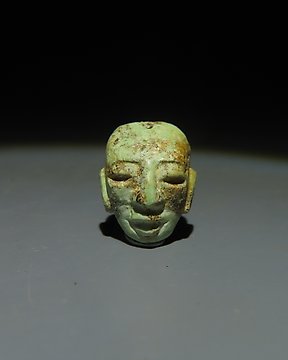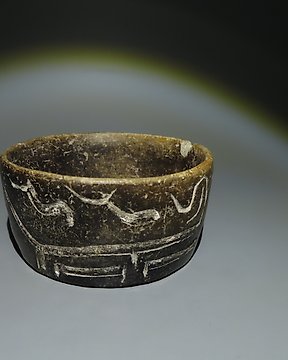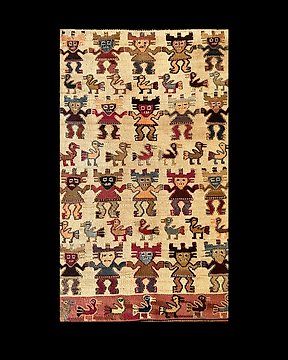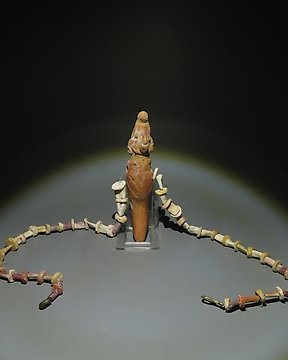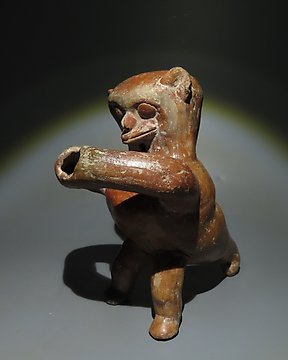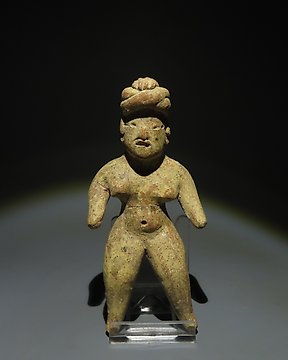Perfect transaction. Good communication and piece better than expected.
Übersetzung ansehenMoche-Chimú Federarbeit auf Baumwolle Ceremonial Cape Black Pelican Gottheit Tapisserie. mit spanischem auf weißem Hintergrund, orangefarbene Wellen am unteren Rand (gelbe, orangefarbene, schwarze und - 60×0.05×60 cm - (1)
Nr. 84672223
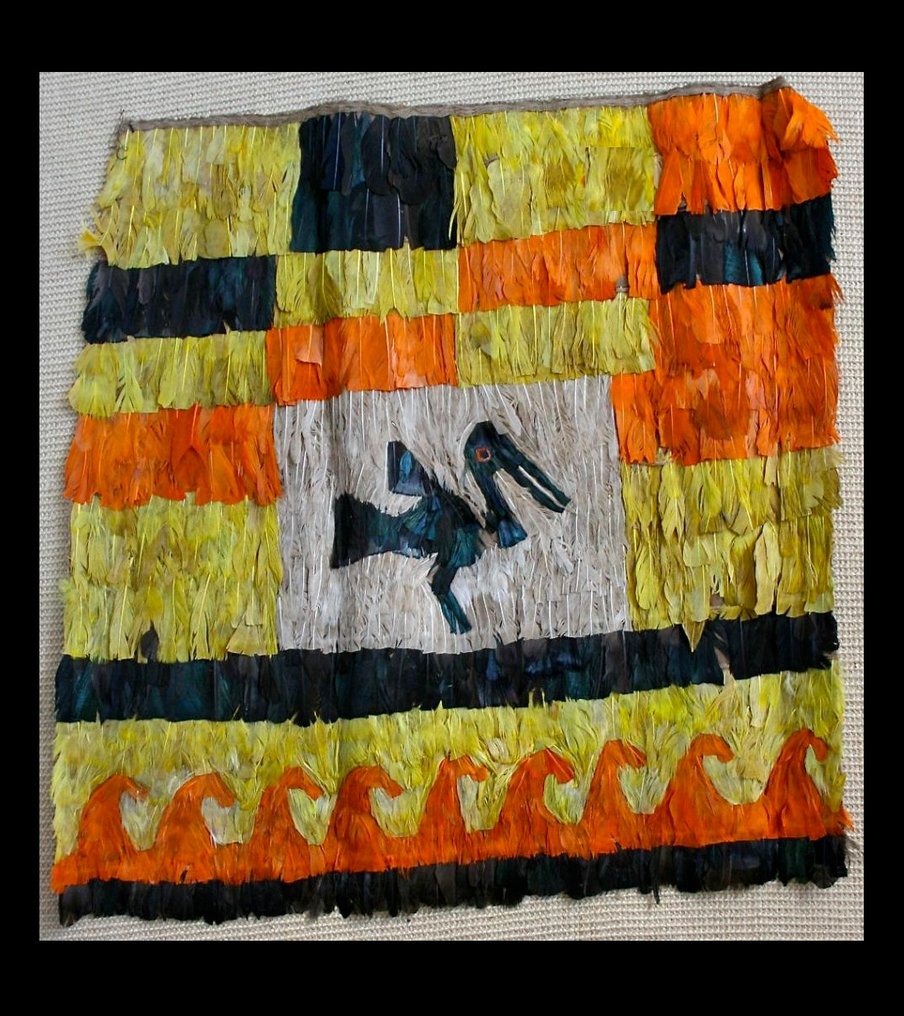
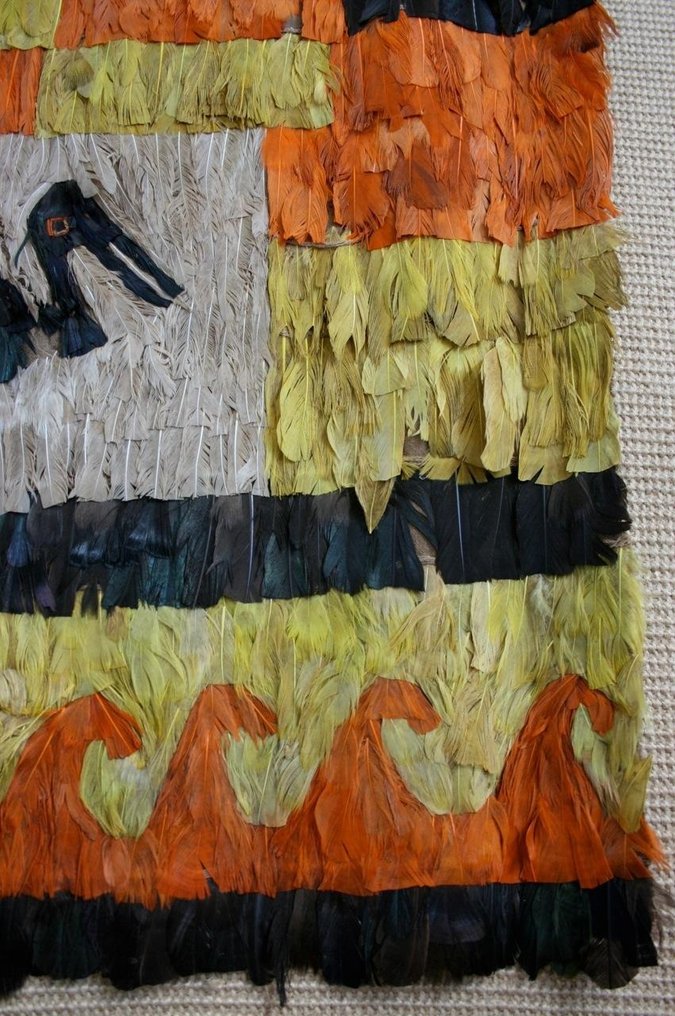
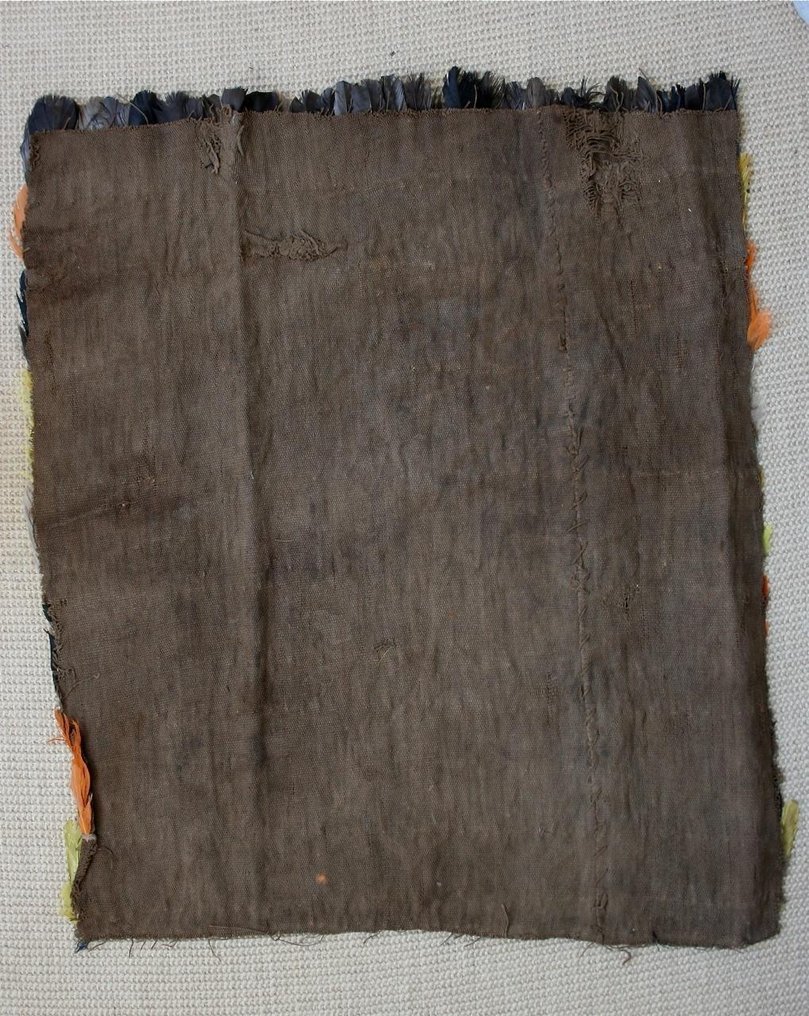
"The Pelican" is a type of seabird that has a large pouch under its beak that it uses to scoop up fish from the water. The pelican was a sacred animal for the Chancay people, as it represented abundance, fertility, and power. The pelican was associated with the sea god Ni, who was also known as Kon or Illapa. Ni was the creator of life and the ruler of the weathe
In terms of symbolism, the pelican's association with fishing and abundance could have made it a symbol of prosperity, sustenance, and fertility. It is possible that pelicans where depicted in art and iconography to represent these ideas, or they may have been featured as part of myths and narratives that conveyed important cultural and spiritual messages.
Feather work was a specialised craft that involved the use of various bird feathers to create exquisite textiles, garments, headdresses, and other decorative objects.
Skilled artisans meticulously collected, cleaned, and sorted feathers according to their colours and sizes. They then used various techniques to create intricate patterns and designs. Some common techniques included feather-piercing, where feathers were punctured and tied together to form a fabric-like surface, and feather mosaic, where small pieces of feathers were arranged to create detailed images.
Feather works served several purposes within pre-Columbian Peruvian societies. They were often used as ceremonial garments for high-ranking individuals, including priests, rulers, and warriors. These garments were symbols of status, power, and religious significance.
In addition to their use in clothing and accessories, feather works adorned architectural structures, including temples and palaces. Feathered tapestries and banners were hung as decorative elements, further showcasing the craftsmanship and artistic skills of the ancient Peruvian cultures.
The production of feather works required extensive knowledge of local bird species, their habitats, and their behaviours. Feathers were typically obtained through trade networks, as certain bird species were not native to all regions of ancient Peru. This trade in feathers helped foster connections between different cultures and regions.
Non-CITES Species Inspection Doc # ESAG5000523W: "Cairina moschata domestica " , commonly known as
Barbary ducks were domesticated by Native Americans since Pre-Columbian times.
The black and white feathers are difficult to identify, for the obvious reason that many birds have such plumage and, in addition, feather workers sometimes trimmed the feathers to refine the design, thus destroying the distinctive silhouette.The white plumage used by the Chimú, Chancay and Nazca cultures was made mainly from the feathers of seabirds, These birds are known for having white feathers on their bodies.
As for yellow or orange dyed feathers, the Chimú, Chancay and Nazca cultures used different sources to obtain the desired colours. Among the possible species used to dye feathers yellow are the achiote plant (Bixa orellana) and the palillo (Curcuma longa). These plants are known to produce yellow pigments used in textile dyeing.
To obtain orange-coloured feathers, the cultures mentioned may have used other natural sources, such as annatto in combination with other dyes or colour-mixing techniques.
Family Heirloom Private Collection Ex. Dr Rivadeneyra collection, Berlin late 1960s to early 1970s. To present owner by descent.Collected through the years by my father Dr. Jose Rivadeneyra Leon and by my grandfather Engr. Julio Rivadeneyra who lived in northern Peru central coast near Chiclayo.
Privately purchased and/or gifted by family members who loved collecting like his cousin,
Carlos Williams Leon who was a Peruvian renowned architect and archeologist. https://es.wikipedia.org/wiki/Carlos_Williams_Le%C3%B3n
Most of the collection was taken to Berlin in 1969 when my father was doing medical research there
Artwork with well-documented legal provenance and Spanish Historical Patrimony Export Certificate.
Any other costs or charges such as customs or import duties, customs clearance and handling may also apply during the shipment of your lot and will be charged to you by the involved party at a later stage if applicable.
The seller will provide all provenance information about the object to the buyer. The seller ensures that any necessary permits are/will be arranged. The seller will inform the buyer immediately about any delays in obtaining such permits.
If the piece goes outside the European Union a new export license will be requested by us, this process can take between 1 and 2 months. According to Spanish legislation, items sent outside the European Union are subject to export taxes and will be added to the invoice, at the buyer's expense. These export fees are fixed on the final auction price and the tax rate is not applied directly on the total value of the item to be exported, rather the different percentages by sections are applied to it:
- Up to 6,000 euros: 5%..- Shipped with Insurance.
Item legal to buy/sell under U.S. Statute covering cultural patrimony Code 2600, CHAPTER 14
This object is subject to the UNESCO Cultural Heritage Protection Act. For shipment to a non-EU member state, export regulations will vary.
"The Pelican" is a type of seabird that has a large pouch under its beak that it uses to scoop up fish from the water. The pelican was a sacred animal for the Chancay people, as it represented abundance, fertility, and power. The pelican was associated with the sea god Ni, who was also known as Kon or Illapa. Ni was the creator of life and the ruler of the weathe
In terms of symbolism, the pelican's association with fishing and abundance could have made it a symbol of prosperity, sustenance, and fertility. It is possible that pelicans where depicted in art and iconography to represent these ideas, or they may have been featured as part of myths and narratives that conveyed important cultural and spiritual messages.
Feather work was a specialised craft that involved the use of various bird feathers to create exquisite textiles, garments, headdresses, and other decorative objects.
Skilled artisans meticulously collected, cleaned, and sorted feathers according to their colours and sizes. They then used various techniques to create intricate patterns and designs. Some common techniques included feather-piercing, where feathers were punctured and tied together to form a fabric-like surface, and feather mosaic, where small pieces of feathers were arranged to create detailed images.
Feather works served several purposes within pre-Columbian Peruvian societies. They were often used as ceremonial garments for high-ranking individuals, including priests, rulers, and warriors. These garments were symbols of status, power, and religious significance.
In addition to their use in clothing and accessories, feather works adorned architectural structures, including temples and palaces. Feathered tapestries and banners were hung as decorative elements, further showcasing the craftsmanship and artistic skills of the ancient Peruvian cultures.
The production of feather works required extensive knowledge of local bird species, their habitats, and their behaviours. Feathers were typically obtained through trade networks, as certain bird species were not native to all regions of ancient Peru. This trade in feathers helped foster connections between different cultures and regions.
Non-CITES Species Inspection Doc # ESAG5000523W: "Cairina moschata domestica " , commonly known as
Barbary ducks were domesticated by Native Americans since Pre-Columbian times.
The black and white feathers are difficult to identify, for the obvious reason that many birds have such plumage and, in addition, feather workers sometimes trimmed the feathers to refine the design, thus destroying the distinctive silhouette.The white plumage used by the Chimú, Chancay and Nazca cultures was made mainly from the feathers of seabirds, These birds are known for having white feathers on their bodies.
As for yellow or orange dyed feathers, the Chimú, Chancay and Nazca cultures used different sources to obtain the desired colours. Among the possible species used to dye feathers yellow are the achiote plant (Bixa orellana) and the palillo (Curcuma longa). These plants are known to produce yellow pigments used in textile dyeing.
To obtain orange-coloured feathers, the cultures mentioned may have used other natural sources, such as annatto in combination with other dyes or colour-mixing techniques.
Family Heirloom Private Collection Ex. Dr Rivadeneyra collection, Berlin late 1960s to early 1970s. To present owner by descent.Collected through the years by my father Dr. Jose Rivadeneyra Leon and by my grandfather Engr. Julio Rivadeneyra who lived in northern Peru central coast near Chiclayo.
Privately purchased and/or gifted by family members who loved collecting like his cousin,
Carlos Williams Leon who was a Peruvian renowned architect and archeologist. https://es.wikipedia.org/wiki/Carlos_Williams_Le%C3%B3n
Most of the collection was taken to Berlin in 1969 when my father was doing medical research there
Artwork with well-documented legal provenance and Spanish Historical Patrimony Export Certificate.
Any other costs or charges such as customs or import duties, customs clearance and handling may also apply during the shipment of your lot and will be charged to you by the involved party at a later stage if applicable.
The seller will provide all provenance information about the object to the buyer. The seller ensures that any necessary permits are/will be arranged. The seller will inform the buyer immediately about any delays in obtaining such permits.
If the piece goes outside the European Union a new export license will be requested by us, this process can take between 1 and 2 months. According to Spanish legislation, items sent outside the European Union are subject to export taxes and will be added to the invoice, at the buyer's expense. These export fees are fixed on the final auction price and the tax rate is not applied directly on the total value of the item to be exported, rather the different percentages by sections are applied to it:
- Up to 6,000 euros: 5%..- Shipped with Insurance.
Item legal to buy/sell under U.S. Statute covering cultural patrimony Code 2600, CHAPTER 14
This object is subject to the UNESCO Cultural Heritage Protection Act. For shipment to a non-EU member state, export regulations will vary.
- 26
- 0
- 0
very nice Chancay weaving, good packaged and fastly delivered, friendly communication Thank you
Übersetzung ansehenPieza interesante, de atractiva factura y de mayor tamaño al que había imaginado. Envío muy rápido en paquete bien protegido.
Übersetzung ansehenGracias por la reseña. Saludos
vous avez à un passionné qui a hérité des œuvres magnifiques qui pourraient être dans des musées vous pouvez acheter les yeux fermés
Übersetzung ansehenJe vous remercie pour vos commentaires.
Spedizione super veloce. Gli oggetti acquistati corrispondono esattamente alla descrizione e alle foto. Esperienza positiva. Sono soddisfatto.
Übersetzung ansehenGrazie per il vostro feedback positivo
Tutto perfetto come al solito!
Übersetzung ansehenEasy and fast transaction. Item as decribed.
Übersetzung ansehenhttps://www.catawiki.com/en/l/78463619 Vielen Dank für Ihre positive Bewertung. Wir wissen das sehr zu schätzen. Mit freundlichen Grüßen Sergio
Friendly seller, good comunication, quick shipping.
Übersetzung ansehenThank you Horacio for your kind feedback. We currently have a similar piece in auction Kind Regards Sergio https://www.catawiki.com/en/l/78527931-huari-inca-blue-cotton-camelid-panel-w-spanish-export-license-70x0-05x50-cm
Tout à fait parfait, merci.
Übersetzung ansehenParfait, merci beaucoup!
Übersetzung ansehenPerfecto, muchas gracias
Übersetzung ansehenSuperbe œuvre d art Chimu. Civilisation dont je suis collectonneur depuis 30 ans. Merci beaucoup.
Übersetzung ansehenMerci pour votre aimable commentaire
Perfecto, muchas gracias
Übersetzung ansehensent as promised. securely packed. a satisfied customer
Übersetzung ansehenThank you for your positive feedback Regards Sergio
Perfecto, muchas gracias
Übersetzung ansehenGracias a usted. Es un placer contemplar estas piezas históricas y confiarlas a una nueva custodia. Me alegro mucho de que haya llegado y de que estéis contentos. Que lo disfrutéis. Cordialmente SR
perfect
Übersetzung ansehenBedankt voor jullie geduld. Ik ben zo blij dat het is aangekomen en dat je er blij mee bent. Veel plezier.
Beautiful object consistent with the description. Good responsiveness from the seller
Übersetzung ansehenThank you for your kind comment. Regards
très bien
Übersetzung ansehenCher Pierre : Merci encore pour votre achat. Sergio
Excelente vendedor, comunicación y envío. 100% recomendado+++
Übersetzung ansehenGracias por sus comentarios positivos. Espero que la pieza te deleite muchas lunas
très bien. merci.
Übersetzung ansehenNous vous remercions pour votre achat
Oggetto molto bello e interessante. Packaging molto accurato. Venditore consigliatissimo. Grazie.
Übersetzung ansehenGrazie mille per il vostro feedback positivo
Excellent seller of incredible items. the items arrived quickly and packaged well. the communication by the seller was timely and provided shipping informatipn and information regarding the items.
Übersetzung ansehenThank you for your feedback Regards Sergio
Thank you. Perfect.
Übersetzung ansehenYou are so welcome. May it give you many years of enjoyment.
Tutto perfetto!
Übersetzung ansehen“Grazie mille” – “prego”
Thanks! Nice object. 👌🙏
Übersetzung ansehen- 26
- 0
- 0
Perfect transaction. Good communication and piece better than expected.
Übersetzung ansehenDisclaimer
Der Verkäufer garantiert und kann belegen, dass das Objekt legal erworben wurde. Der Verkäufer wurde von Catawiki darüber informiert, dass er die Unterlagen, die gemäß den Gesetzen und Vorschriften seines Landes erforderlich sind, zur Verfügung stellen muss. Der Verkäufer garantiert, dass er berechtigt ist, das Objekt zu verkaufen/auszuführen. Der Verkäufer wird dem Käufer alle Informationen, die zur Provenienz des Objekts vorliegen, zur Verfügung stellen. Der Verkäufer versichert, dass alle erforderlichen Genehmigungen eingeholt wurden/werden. Der Verkäufer wird den Käufer unverzüglich über etwaige Verzögerungen bei der Einholung dieser Genehmigungen informieren.
Der Verkäufer garantiert und kann belegen, dass das Objekt legal erworben wurde. Der Verkäufer wurde von Catawiki darüber informiert, dass er die Unterlagen, die gemäß den Gesetzen und Vorschriften seines Landes erforderlich sind, zur Verfügung stellen muss. Der Verkäufer garantiert, dass er berechtigt ist, das Objekt zu verkaufen/auszuführen. Der Verkäufer wird dem Käufer alle Informationen, die zur Provenienz des Objekts vorliegen, zur Verfügung stellen. Der Verkäufer versichert, dass alle erforderlichen Genehmigungen eingeholt wurden/werden. Der Verkäufer wird den Käufer unverzüglich über etwaige Verzögerungen bei der Einholung dieser Genehmigungen informieren.
Bieter müssen sich bewusst sein, dass es in einigen Länder nicht erlaubt ist, Objekte von gefährdeten und anderweitig geschützten Arten zu importieren, auch wenn eine Herkunftsbescheinigung vorliegt. Durch Ihr Gebot bestätigen Sie, dass Sie sich mit den Zollgesetzen und Vorschriften des eigenen Landes vertraut gemacht haben.
Bieter müssen sich bewusst sein, dass es in einigen Länder nicht erlaubt ist, Objekte von gefährdeten und anderweitig geschützten Arten zu importieren, auch wenn eine Herkunftsbescheinigung vorliegt. Durch Ihr Gebot bestätigen Sie, dass Sie sich mit den Zollgesetzen und Vorschriften des eigenen Landes vertraut gemacht haben.
